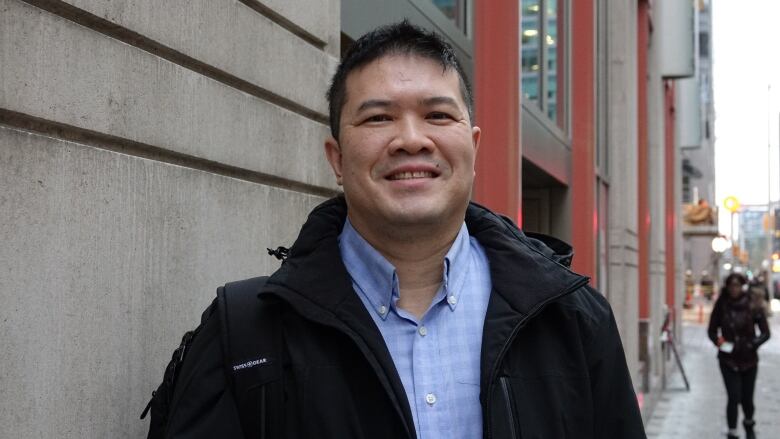U of O researchers closing in on better, cheaper carbon capture technology
Method could lower cost of removing CO2 before it enters atmosphere, scientists say

A teamof researchers at the University of Ottawa is closing in on anew carbon capture technologycapable of absorbing the industrial byproduct before it hits the atmosphere.
Chemistry professor Tom Woo led the researchinto materials that can more effectively captureCO2from the exhaust emitted by flues or pipes at power plants.
- Carbon capture: What you need to know about catching CO2 to fight climate change
- Carbon tax must hit $210 per tonne by 2030 to meet Paris targets, report concludes
According to Woo, one-third of the world's greenhouse gas emissions come from those industrial sources.
"So if we can pull the CO2 from these large point sources, then we can significantly reduce our greenhouse gas emissions," Woo said.

A better way
Carbon capture technology is nothing new,but the current methods areinefficient and expensive, he said.
Currently, some power plants bubble exhaust through water containing special materials that attach themselves to the harmful gases, but the water then has to be boiled off to isolate the CO2.
Woo's research teamlooked for differentmaterials that would bind themselvesto CO2, but not the water.They developedan algorithm whichgenerated more than 330,000 hypothetical materials.
"We simulated how they interactedwith gases and determined what makes a material good forcapturing CO2," Woo said.

They then worked with scientists at the cole polytechnique fdrale de Lausanne in Switzerland to identify potential materials that contain the same atomic features and synthesize them. The Swiss researchers successfully produced and tested the new materials using wet flue gases.
Woo and his team also collaborated with researchers at theUniversity of California Berkeley in the U.S., Heriot-Watt University in Scotlandand the Universidad de Granada in Spain to assess the new materials.
Laying the groundwork
Because paying the carbon tax is currently less expensive than the cost of capturing CO2 about $100 to remove one tonne of CO2versus B.C.'s carbon tax of $40 per tonne, Canada's highest most manufacturers aren't bothering to isolate and remove carbon dioxide, Woo said.
"So we really need to bring it down," he said.
According to the simulated model created by Woo's research team, the cost of removing CO2 could potentially be lowered to less than $40 per tonne, creating an incentive for manufacturers.
Woo believes his team is laying the groundwork towardreducing greenhouse gases emission as the world transitions to renewable energy.
"It's exciting, and I am proud to be part of it."












_(720p).jpg)


 OFFICIAL HD MUSIC VIDEO.jpg)
.jpg)



























































































